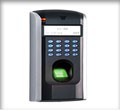Risk analysis is made to determine and assess the risk of the objective’s physical security and precedes the implementation of the systems and organizational risk mitigation measures, technological and of human security.
The risk analysis for physical security should ensure the identification of the vulnerabilities and risks, estimating and determining their level of exposure to the production of physical security incidents. It also need to indicate the necessary safeguards for the analysed objective.
Roel Systems performs physical security risk analysis in accordance with Government Decision no. 301 of 2012, Instruction No. 9/2013 and subsequent regulations that complement this, having qualified and accredited staff for this purpose.
After performing this expertise, according to the internal and external context of the objective targeted by the risk analysis, we will provide proposals to deal with risks to physical security so that the cost / benefit ratio will be optimal and the legal requirements will be met.
The access control systems can be recommended and implemented following the report of physical security risk assessment, but may be requested also as special applications by the customer. It’s also used as an electronic timekeeping solution.










